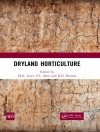This book discusses the natural classification and biosystematics of Triticeae and presents the most significant findings of comprehensive studies on the Triticeae, an important tribe in the grass family (Poaceae) that includes major crops such as wheat, barley, rye, and triticale, as well as various forage crops found in different genera. The five-volume Chinese version of Biosystematics of Triticeae was published in 1998, 2004, 2006, 2011, and 2013, and included the 30 genera, two subgenera, 464 species, nine subspecies, and 186 varieties of Triticeae identified to date. This is their English edition.
The book is divided into five volumes, covering a wide range of disciplines from traditional taxonomy and cytogenetics to molecular phylogeny.
Volume I, Triticum-Aegilops complex focuses on the taxonomy and generic relationships of Triticum and Aegilops, discussing the origin of common wheat as a crop.
Volume II, Genera: Secale, Tritiosecale, Pseudosecale, Eremopyrum, Henrardia, Taeniantherum, Heteranthelium, Crithopsis, and Hordeum highlights a number of genera that are closely related based on their morphological classification and that contain only one unique genome.
Volume III describes perennial genera and species including Kengyilia, Douglasdeweya, Agropyron, Australopyrum, and Anthosachne.
Volume IV addresses perennial genera and species including Stenostachys, Psathyrostachys, Leymus, Pseudoroegneria, and Roegeneria.
Volume V presents perennial genera and species such as Campeiostachys, Elymus, Pascopyrum, Lophopyrum, Trichopyrum, Hordelymus, Festucopsis, Peridictyon, and Psammopyrum.
Cuprins
Chapter 1. Biosystematics of Secale.- Chapter 2. Biosystematics of Triticale.- Chapter 3. Biosystematics of Pseudosecale.- Chapter 4. Biosystematics of Eremopyrum.- Chapter 5. Biosystematics of Henrardia.- Chapter 6. Biosystematics of Taeniatherum.- Chapter 7. Biosystematics of Heteranthelium.- Chapter 8. Biosystematics of Crithopsis.- Chapter 9. Biosystematics of Hordeum.
Despre autor
Professors Chi Yen and Junliang Yang are botanists, crop geneticists, and breeders. They are famous in promoting the research of the systematics of Triticeae in the world and has made outstanding contributions to the study of Triticeae germplasm resources.
Professors Chi Yen and Junliang Yang revealed the transfer of cell nuclear material according to conjugation tube in higher plants. They found the original mechanism of homologous-heterogenous polyploids and non-integrated polyploids. Thus, they set up a classification system of the genus and species with genome and sub-genome combinations, respectively. It was known as a significant contribution after Mendel’s Law of Inheritance, Morgan’s Chromosome Theory of Heredity, and Hitoshi Kihara’s Genome theory in Triticeae. And they also revised Ảskell Lӧve’s classification system. Based on this study, they re-classified about 6100 Triticeae germplasms collected by them, including 193 species from 21 genera. Theycharacterized the chromosome numbers of 40 species, found ten new species, and named two new genera Kengyilia and Douglasdeweya.
Professors Chi Yen and Junliang Yang used these germplasms to improve wheat varieties with high yield, multi spikelet, and the resistance of pre-harvest sprouting, such as “Yaanzao”, “Datouhuang”, “Zuyeqing” and “Fan 6”. He improved the strategy of convergent hybridization and selected excellent variety ‘Fan 6’ that became the critical parents of wheat in China. The durable resistance to stripe rust of “Fan 6” remained for more than 20 years.
Professors Chi Yen and Junliang Yang proposed the multiple secondary axis theory. This theory described the essential nature of organs in Gramineae and other plants.












